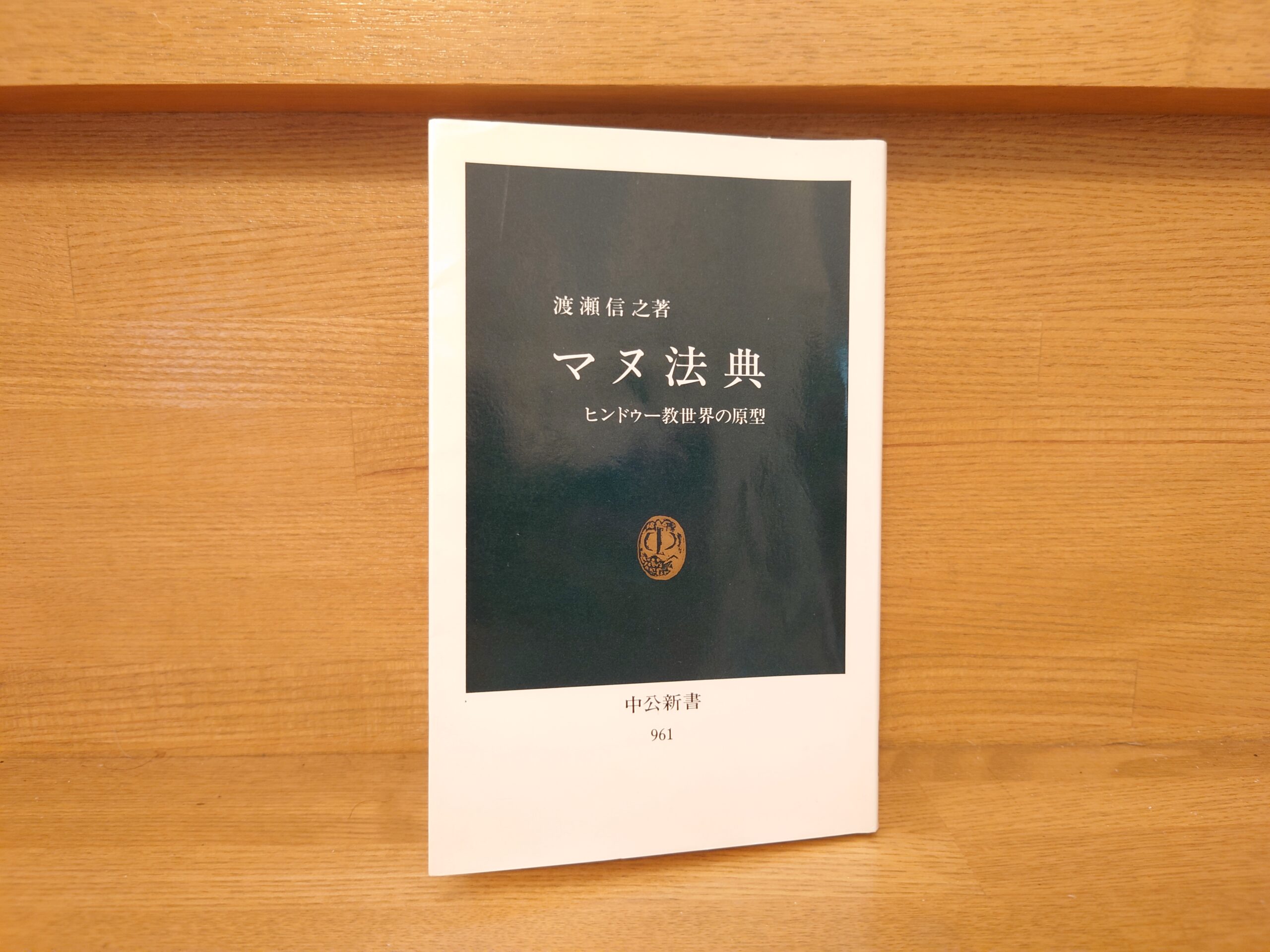Nobuyuki Watase's "Code of Manu: The Prototype of the Hindu World" Summary and Impressions - Recommended for learning about the Indian worldview and code of living that has persisted since ancient India.
The book introduced here is "Manu Code: Prototype of the Hindu World" by Nobuyuki Watase, published by Chuokoron-sha in 1990.
Let's take a quick look at the book.
In India, a multi-ethnic, multi-lingual, and multi-religious country, Hindus today account for 80% of the total population and exert an overwhelming influence on the culture, politics, and economy. Hinduism is a religion that integrates faith and practice, and has a unique social system, laws, and system of ethics and morality, the prototype of which is the Code of Manu, which is estimated to have been compiled around prehistoric times. This book presents an accurate and easy-to-understand introduction to the Code of Manu, which still governs the social system, people's values, and the depths of life in India today.
AmazonProducts Page.
This book was the cornerstone of the worldview and code of life of the Indian Hindu world.Manu Code."This is a reference book for
As mentioned in the book introduction above, this work is an excellent overview of the "Code of Manu" in an easy-to-understand manner. In the "Foreword," the author says the following about the "Code of Manu" and India
It is well known that India is a multi-ethnic, multi-lingual, and multi-religious country. Even today, India does not have a single language, equivalent to our own Japanese, which is used by all people as a common language. The number of languages recognized as official languages is as many as 15. We also often hear about the difficulties of religious issues. In particular, the conflict between the two major religions, Hinduism and Islam, often causes confusion in Indian society. When looking at religion in India, the common sense with which we view religion in Japan does not apply. Religion is not merely the realm of spiritual belief or creed. In the case of Hinduism, for example, it is not the Hindu who feeds his mind on its doctrines and believes in its gods. Hinduism is a religion that unites faith and life practice. Moreover, such faith and life are inseparable from the social institutions, laws, and systems of ethics and morality unique to the Hindu world. In this sense, Hinduism forms a so-called "religious society.
Chuokoronsha, Nobuyuki Watase, Manu Code: A prototype of the Hindu world, p. i.
When we look at religion in India, the way we look at religion in Japan does not apply. Religion is not merely a spiritual belief or creed. In the case of Hinduism, for example, it is not that Hindus feed their minds on its doctrines and worship its gods. Hinduism is a religion that unites faith and life practice. Moreover, such faith and life are inseparable from the social institutions, laws, and systems of ethics and morality unique to the Hindu world. In this sense, Hinduism forms a so-called "religious society."
This passage is very important for Indian religion.
Religion in India is an integral part of life itself. It is not merely a spiritual belief, but exists as a way of life itself. Buddhism was born out of this inter-religious and worldview of India.
This "Code of Manu," as it is preached in this work, has also been greatly influenced by Buddhism, Jainism, and various ordained practitioners. No, to be more precise, ideas and institutions have been created by influencing each other.
When we Japanese try to study Buddhism in India, we tend to see the Indian world only from the Buddhist side. In India, however, Buddhism was more of an outsider's existence. The mainstream is still Hinduism.
Moreover, Buddhism adopted a policy of not intervening too much in the daily lives of its lay believers. In other words, the daily life and rites of passage of Buddhists remained within the framework of the Hindu world.
For more information on the circumstances in this area, seeA History of Buddhism in New Asia 02 India II: The Formation and Development of Buddhism.Written by Yasuaki NaraA History of Indian Buddhism as Culture.This has been pointed out in recent Buddhist studies such as the following.
This book is very valuable to know the norms of life and worldview of the Hindu world, which has also coexisted with such Indian Buddhists. I think it is a very significant work for thinking about Indian Buddhism.
I read the "Code of Manu" as soon as I read this reference book. And I was immediately surprised. I was surprised at how comprehensive the book was and how easy to understand the explanations were! This was especially true when I actually read "The Code of Manu" afterwards. Thanks to this reference book, I was able to read "The Code of Manu" with ease. Moreover, I was able to read the "Code of Manu" while thinking about Indian society and religious conditions of the time, which I could not have realized if I had just read the "Code of Manu". I can only say "thank you" for this.
This is a must-read reference book for reading The Code of Manu. It is also a recommended reference book to learn about the religious situation and the code of life in India. Why not pick up a copy?
The above is "Nobuyuki Watase's "Code of Manu, the prototype of the Hindu world" - recommended for learning about the worldview and code of life of the Indian people since ancient India.
Next Article.
Click here to read the previous article.
Related Articles





































